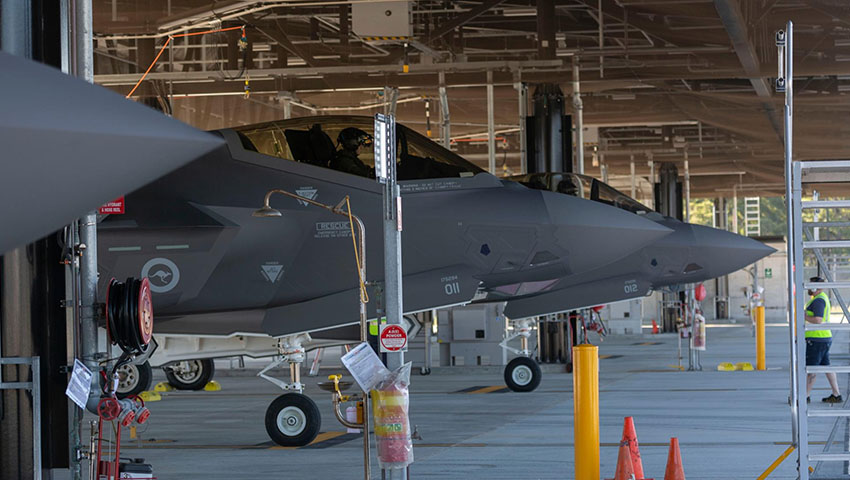Defence expenditure, particularly controversial megaprojects like the Joint Strike Fighter and now the Future Submarine Program, represents some of the largest examples of capital expenditure made by the Australian taxpayer, meaning value for money should serve as a key focus for parliamentary oversight, explains Chris Skinner.
To continue reading the rest of this article, please log in.
Create free account to get unlimited news articles and more!
Recent testimony from the Auditor-General and staff of the Australian National Audit Office (ANAO) to the joint parliamentary committee on public accounts and audit has revealed the limitations of the governance arrangement for the multi-billion-dollar Defence programs such as the Joint Strike Fighter (JSF) and the Future Submarine Program (FSP).
After extensive discussion on 20 May regarding the definition of out-turned dollar costs, which are the original cost estimate extended by a Treasury-defined index for expected inflation of the Australian dollar plus a further adjustment based on anticipated changes in foreign exchange rates over the period of the program.
For the FSP, the foreign currencies involved are United States dollars, the euro and British pounds.
As we all know, these can vary dramatically to reflect changes in the economic performance of countries, and so any estimation of future changes is less well-based than picking horses in the Melbourne Cup!
The utter folly of the media and others getting all worked up over escalation in these out-turned cost estimates beggars belief. There is no possible control that any competent project management team such as we have in JSF and FSP could ever control or influence those escalation and adjustment factors, so why on earth does everyone get so worked up when the out-turned cost changes?
Unfortunately, the Auditor-General and ANAO staff have not made this crystal clear in their re-powering for the professed reason that they only audit the performance against an approved plan.
It therefore falls to the Parliament to provide the only other effective governance on Defence megaproject development. And to their credit, they do understand the issue but have not made clear to the media that their megaphone descriptions of project cost increases are completely misplaced and they should be concentrating on those matters that are within human control by Defence and by ministerial oversight.
There are two other aspects of Defence megaproject governance that should be noted.
The first is the assessment of risk within complex, multi-decade, multi-deliverable, multi-national and industrial projects. There is a highly regarded Australian standard for risk management, ISO 31000:2018 Risk Management-Guidelines, and several more detailed instructions and supporting explanatory management.
These are well understood within Defence and the underlying product for each risk element of its severity should it occur, and the probability of that risk element occurring is assessed in detailed ways with further detailed mitigation actions defined to reduce the severity of selected higher-level risk items.
The problem arises that even so, in areas of technological innovation or time or scale pressure, the residual risk level may still be medium to high and this is accepted because of the urgency or priority attached to the works.
Unfortunately, the lay public think that risks must always be minimised and therefore anything medium to high risk is unacceptable. And the ANAO in its Major Projects Report for 2018/2019 declined to make this clear or to offer any finding or qualification thereto.
The issue is being resolved with a more formal megaproject management tool being rolled out over all Defence projects, but one might think about time!
The second issue is the perennial measure of Australian industry involvement (AII) in Defence projects. Firstly, there is much ballyhooing about how programs such as shipbuilding will be performed in Australia and thereby create jobs for construction and thereafter for sustainment, but that only covers part of the potential benefits.
There is also the participation in the design process, which delivers several benefits, including technology transfer, with suitable licensing of intellectual property and the possibility to optimise AII in the supply chains for construction and even more importantly for the sustainment.
The second issue with AII is the levels are generally not quantified in contracts and overarching agreement such as the Strategic Partnering Agreement for the Future Submarine.
The ANAO has now agreed to work with Defence to attempt to define a framework and metrics for AII that can be audited, as currently they state this is not feasible.
So where does this leave the community and more importantly our representatives in the Australian Parliament in doing our best to assure value for money spent in Defence megaprojects? Well, we should stop raving on about costs in anything other current or original year values. Out-turned values are of little more than academic significance.
Secondly, we should look more carefully at the justifications provided for acceptance of medium or higher risks, and the ANAO should comment on these values compared with earlier estimates or contingencies allowed to cover them.
Finally, we should all look much more closely at the nature of the Australian industry involvement and not purely over the political time frame of the election cycle, but rather over the period of skills development and leveraging those skills for export and other product markets.
The joint committee on public accounts and audit has provided an invaluable insight into the complex processes for achieving value for money in Defence megaprojects, and the Auditor-General has committed to exploring ways with Defence to provide the visibility to the Parliament that is needed to see that the value achieved has the widest possible benefit.
Christopher Skinner is a former Navy engineer with extensive sea service and development experience ashore in defence and transportation.
He was the inaugural project director for the ANZAC Frigate program at the time when it was given first pass approval, and had previously been seconded to the US Naval Sea Systems Command to manage trials on the first of class FFG-7 frigates for the USN and RAN.

 Login
Login







